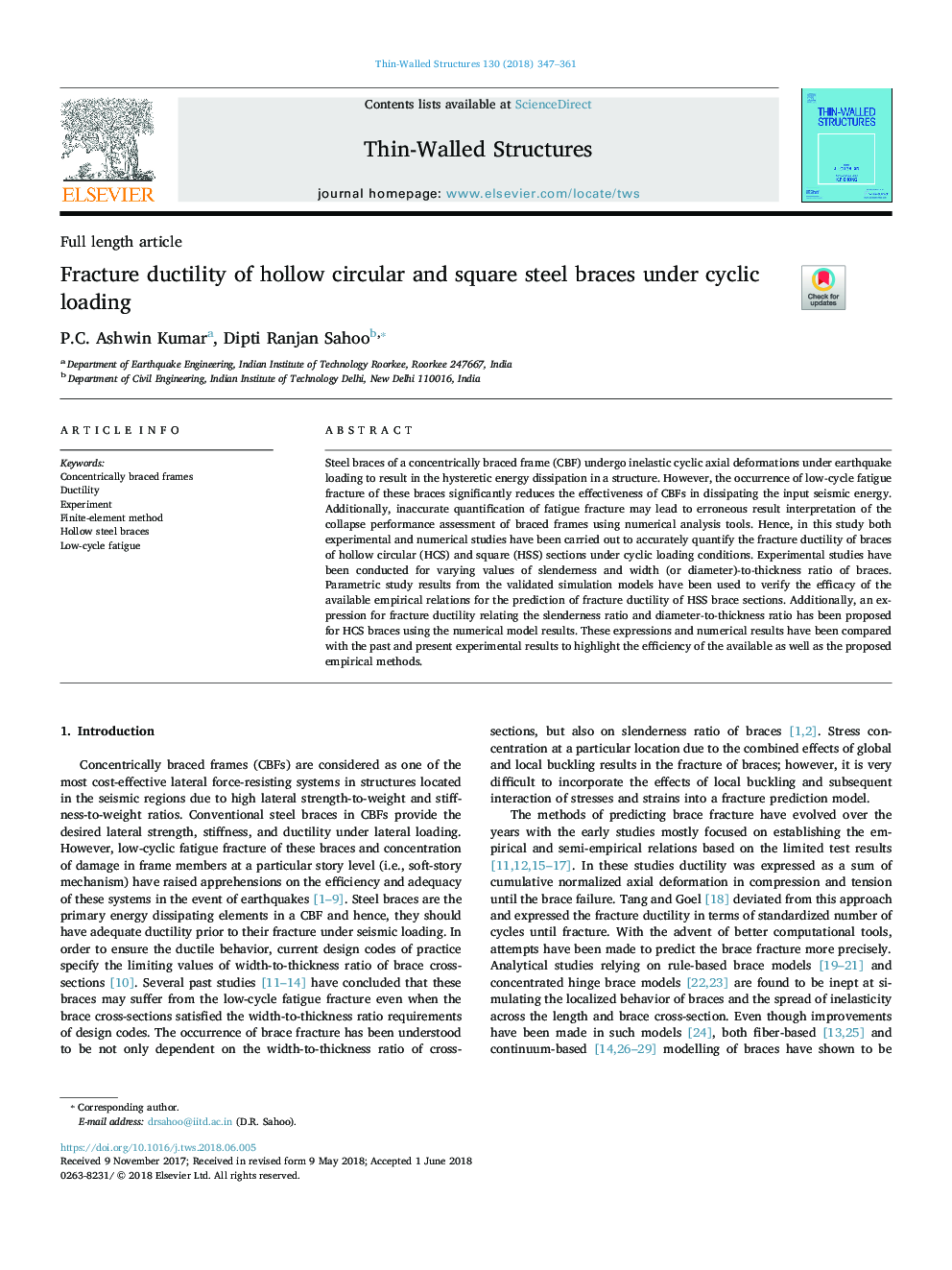| Article ID | Journal | Published Year | Pages | File Type |
|---|---|---|---|---|
| 6777266 | Thin-Walled Structures | 2018 | 15 Pages |
Abstract
Steel braces of a concentrically braced frame (CBF) undergo inelastic cyclic axial deformations under earthquake loading to result in the hysteretic energy dissipation in a structure. However, the occurrence of low-cycle fatigue fracture of these braces significantly reduces the effectiveness of CBFs in dissipating the input seismic energy. Additionally, inaccurate quantification of fatigue fracture may lead to erroneous result interpretation of the collapse performance assessment of braced frames using numerical analysis tools. Hence, in this study both experimental and numerical studies have been carried out to accurately quantify the fracture ductility of braces of hollow circular (HCS) and square (HSS) sections under cyclic loading conditions. Experimental studies have been conducted for varying values of slenderness and width (or diameter)-to-thickness ratio of braces. Parametric study results from the validated simulation models have been used to verify the efficacy of the available empirical relations for the prediction of fracture ductility of HSS brace sections. Additionally, an expression for fracture ductility relating the slenderness ratio and diameter-to-thickness ratio has been proposed for HCS braces using the numerical model results. These expressions and numerical results have been compared with the past and present experimental results to highlight the efficiency of the available as well as the proposed empirical methods.
Related Topics
Physical Sciences and Engineering
Engineering
Civil and Structural Engineering
Authors
P.C. Ashwin Kumar, Dipti Ranjan Sahoo,
